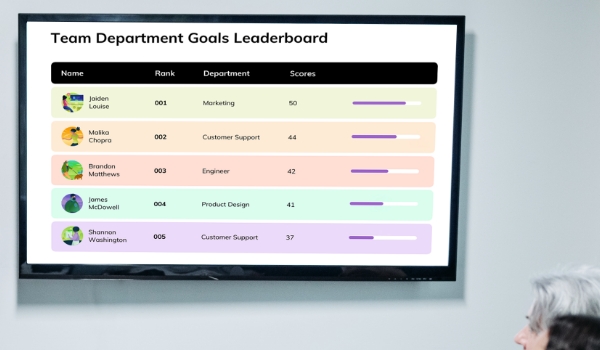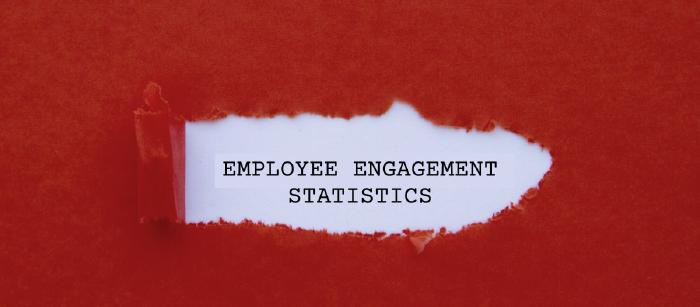
Nov 30 2022
9 min read


Sep
Admit this: You’re not hitting the right chord with employee engagement & retention hacks due to the old and cliched strategies you’re implementing.
You’re offering rewards, increments and promotions (often delayed), birthday gifts, and playing Secret Santa.
Truth be told, these are not engagement hacks; these only add to positive experiences at work.
According to Gallup’s State of the Global Workplace, only 21% of employees feel engaged at work. And you’ll be surprised to know that 33% of US employees leave their jobs to encounter new challenges.
Hiring is costlier than retaining employees. Most US companies spend around $550 billion annually to compensate for disengaged employees. Ouch!
Seems like it’s high time you developed some out-of-the-box strategies.
In this blog, I will share some ideas on how to build unique strategies that work for the modern-day workforce.
But first, let’s get inspired by a few real-life examples of top companies who’ve left no stone unturned to meet their employee engagement goals.
Companies across the globe are trying to come up with extraordinary ideas to engage employees. But four have gone to extremes to retain employees and hit the right chord with team engagement. Let’s see how they did it.
Many companies provide paid vacations. If you don’t yet, start providing to hold back the talents. But have you heard of Paid, Paid-Vacations?
Full Contact offers its employees $7500 to go on a paid vacation, meaning the salary isn’t cut, and they are also paid for the holiday expenses. The only rule is that the employee must go somewhere and disconnect from emails, messages, office chat rooms, and everything related to work. Wow! Sounds like a dream company for job seekers.
With zero committees in the company, Apple is organized like a startup. And with that, an open office design and an excellent routine of collaboration make Apple stand out with its unique work culture. Their focus on employee wellness is commendable as they offer stock shares, in-house workout centers, nature walks, and many other financial & fitness perks.
Have you heard of nap rooms in an office? No? Huffington Post is boosting employee productivity and engagement with nap rooms in the workplace. It allows workers to take power naps in the middle of the work and return with renewed vigor.
Well, the post-lunch dizziness has been rightly addressed! The employees here now have ditched the afternoon coffees and resorted to the nap rooms to rest and recharge.
Job designations create dissatisfaction among employees, thought the Motley Fool authorities. So, they decided to offer a DIY job title to employees. For example, if you are into marketing, you may fancy the job title ‘Online Marketing Genius’; you can actually have that title for your professional profile. Motley Fool calls it ‘My Role’ concept.
Adding to the workplace fun, this hack removes the unnecessary burden of hierarchy and bossy behavior. A great place to work for sure! And they are known for their immense employee benefits too.
Stimulating & motivating indeed!

So, here we unfold the ingenious strategies to carry out employee engagement in the ever-evolving workplaces of major industries.
Go through the top 18 tactics before you push your team to brainstorm and take new initiatives. Maintain a high competitive edge, always.
1. Prioritize employee’s wellbeing
48% of US employees feel exhausted at work, which affects their psychological and physical wellbeing, causing more disengagement and reduced productivity. When you value your employee’s health and wellbeing as an employer, you help yourself.
Come up with wellness programs, stress-relief activities, flexible work hours, and set realistic targets for your people. Let them enjoy their work and good health side-by-side.
2. Appreciate & give feedback
Appreciate your team when they’ve accomplished something. Recognize the effort they put in. Announce rewards for achieving small targets. Your employees will feel valued, noticed, and the zeal to achieve more will double up.
But these time-to-time recognitions and typical annual or monthly performance reviews won’t suffice unless feedback comes in various forms and comes randomly. Giving feedback at impromptu moments helps build a natural culture of appreciation and feedback (both positive and negative) in the workplace.
Did you know?
85% of employees take more initiative in their work when they receive feedback
92% of employees agree that negative feedback if delivered appropriately, is highly effective at improving their performance
89% of HR leaders consider ongoing peer feedback and check-ins as the key to successful outcomes
So, reinforcing feedback, redirecting feedback, and third-party feedback can be your way out to better employee engagement and increased performance.
3. Communicate, collaborate & focus on team-building
Internal communication lies at the core of perfect employee engagement. Technology has made collaboration and conferences possible with high-end communication tools. And with the majority of the workforce opting for WFH or hybrid work, companies need digitally rich communication for strong team building.
Digital signage has become a go-to tool for office comms. From work meetings to casual video chats, from showing social media posts in the employee break rooms to data dashboards on conference displays― digital signage helps to engage teams in many different ways.
4. Plan your new recruit’s first day beforehand
All millennials have been there. The first day at work makes them feel exhausted not because of burn-outs but because they’re idle. And that makes that employee feel disengaged and dejected for a long time in the company. So, let’s make the onboarding process go beyond mere induction.
One way onboarding can be improved is by integrating employee onboarding software . This can help simplify administrative tasks and offer personalized training and support for each new staff member.
Plan the first day of a newly hired employee at least two days before so they won’t have to wait, yawn and wonder the whole day. Let the new ones explore the office, meet their colleagues and learn about your company’s positive work culture from day one.
You can incorporate microlearning modules or short orientation courses for the new recruits. The simpler the training phase, the faster your onboarded employees get to the actual work.
Read more: How to engage millennials in the workplace
5. Implement internal mobility
Internal mobility is helping employees uncover their latent skills and capacities through the job-role swap. Internal mobility can be implemented in various ways: upward, lateral, location-based, and project-based mobility.
For example, you can change the job role of your employee and move them towards lateral mobility where their salary or level of designation doesn’t change, but the responsibilities take a new shape. This helps in skill-honing and easy talent retention. On the other hand, when you promote your employee to a new position with a salary hike and greater responsibilities, you implement upward mobility and promote increased engagement.
6. Offer challenges to resolve
33% of US employees leave their jobs to encounter new challenges. Monotony at work leads to a decline in creativity and makes employees leave.
So, let your employees handle matters that push their creativity and problem-solving capabilities. When your workforce rises to a challenge, they get competitive and demand more resources.
7. Embrace workplace gamification ideas

Just like in schools, gamification works best at workplaces too. Various apps and tools are developed daily for better gamification. It helps employees hone their skills, achieve targets, feel motivated, and communicate effectively. It helps in understanding a specific project in detail too. Here are a few examples of workplace gamification ideas:
Spin to win badges
Scratch card bonus
Leaderboards for performance
Interactive game-based training for new apps & tools
Competitions and contests
8. Provide opportunities to learn & grow
According to workplace learning & development report 2018 by LinkedIn:
94% of employees prefer to stay longer in a company that invests in career growth
68% of employees prefer learning new things at work
Almost 90% of companies offer digital learning today to engage their employees
Therefore, if you haven’t yet invested in learning & development for employees, it’s high time you do. Offer them professional courses, give access to resources and help them expand knowledge, refine skills and contribute back to the business.
Keep a scope for continuous learning in the workflow so that their regular assignments engage them in valuable learning and help them develop skills concurrently.
9. Help your employees see why their work matters
So, things went wrong because you didn’t make your people feel valued. Yes! When you clarify to each worker why their contribution is essential, they feel motivated.
Show them the chain of the whole work process, from production to profit. Demonstrate whose work impacts what and where. Once they realize that without their valued contribution, the chain isn’t complete, they get inspired, the unity in the team is triggered, and the result is a seamless, productive workflow.
10. Promote employee autonomy
Job satisfaction is directly related to employee autonomy. Allow your employees to take a call on their projects. Let them make decisions regarding major & minor changes.
Empower them with independence and autonomy and make them feel more responsible about the assignments. You can allow an outperforming employee to present their projects directly to the client. You can let one team leader choose their team members for a job. Allow employees to set their schedules and deadlines according to project difficulty & company goals. Letting them decide where to work from (office or home) also promotes autonomy at the workplace.
11. Let them maintain work-life balance
94% of professionals in the US spend more than 50 hours working every week, while many of these people work on the weekends too! 51% of workers say they have missed important life events because of work commitments.
Overtime and burnout cause dissatisfaction and disengagement, resulting in increased absenteeism and resignation. Helping your employees maintain a proper work-life balance ensures employee retention. They mustn’t feel overburdened with work. Hence, leaders must have a balanced approach to project management & distribution. Setting realistic deadlines and achievable goals is a high priority.
12. Contribute to employee’s financial wellness
Apart from physical and mental wellbeing, what matters most is financial wellbeing. You might wonder, “how much raise do you want me to give?” but trust me, it’s not always about a raise. Health insurance and accidental coverage from a company can ease the cash-out burden on employees and improve their at-work productivity.
How about allowing your employees to access the salary earlier than usual during challenging times? Let them withdraw as and when they need. Adjust the same on the salary day. It’s called Earned Wages Access.
Tapcheck, Proliant, Paytient – these companies have already executed this idea. They are promoting pay-on-demand to help workers with every out-of-pocket care expense, with a smart app to offer earned wages access to employees.
13. Consult before executing big plans
Why do only the leaders and managers get to know the big plans? Include your employees from every end to consult about the company’s growth & developments. With digital signage and virtual conferencing benefits, you can now include everyone. Discuss your new undertakings, conduct live polls, allow your employees to give their honest feedback anonymously and you will see how quickly your employees’ engagement in the workplace amplifies.
14. Highlight accountability
Holding team members accountable for every project makes them sincerely dedicated to the assigned task. Make it a practice to highlight accountability in each meeting.
Lead by example, consider team members’ views about the project and its progress and talk it out whenever there’s a severe problem. Sometimes employees don’t even realize where they go wrong and how it affects the entire company. Make them understand clearly and promote accountability in all departments.
15. Offer unexpected perks & privileges
Companies are hiring talents from all over the world. So, with superb talents on board comes the responsibility of retaining them long-term. Exciting perks and benefits work wonders here. Some of the following are examples to help you ideate:
Gym or Yoga class membership
Equity share packages
Coverage for higher education
Health insurance for family
Home-office allowance
E-commerce store discount coupons
Periodic sabbatical
16. Transparency – the key strategy for employee engagement
Today you’ve hired someone with an annual package of $54000. But the employee already working for the same role is getting $50000 annually. Your employees will surely notice the disparity in the salary within a few months, feel disappointed & angry, lose engagement, and eventually leave the company.
Not only for salary but transparency is also required at every step of work. Why keep your employees in the dark about the actual project? If you want them to focus and work dedicatedly, don’t you think they should feel a passion for the work?
Discuss the plans with everyone involved in the project, ask for opinions, and let them see behind-the-scenes activities to understand the gravity of the project. It works like magic for team engagement.
17. Know your people more closely
Do you know your employees? No, I guess. Knowing the mere names won’t help. You must engage in brief conversions weekly or monthly to know each of your team members. Leadership is also about knowing your people’s strengths, weaknesses, joys, discomforts, problems, and fears.
A 15-20 minute talk won’t hurt your business. If anything, the team will confide more in you and feel one with the same sorts of problems & fears, likes & dislikes disclosed to each other.
18. Plan happy hours every week
This is not an option; it’s a must-have. Especially if you have more than 50% of remote workers, arrange for virtual happy hours every week. Encourage virtual happy hours, weekly meet-ups, and daily hangout rooms where employees can connect, talk about anything but work and get to know each other better. It’s crucial for any company – startup or multinational. This adds to better team bonding and helps with improved productivity.
Get inspired by the listed strategies and examples. Find the best-suited ones for your business and employ them ASAP to prevent employee disengagement.
But remember, never, ever try to micro-manage employees.
Micro-managing makes things worse. You try to keep track of every move of your employees, thinking you are keeping them under strict surveillance and making them work harder and more productively. But, trust me, it hits in the wrong place. Peeping over your employees’ shoulders will make them go even more disengaged and uninterested.
Let their creativity and skills flow free while you deploy some of the above strategies.
All the best!
Take complete control of what you show on your digital signage & how you show it.
Start Free Trial Schedule My Demo
Nov 30 2022
9 min read

Nov 11 2022
8 min read

Oct 20 2022
5 min read

Sep 2 2022
8 min read